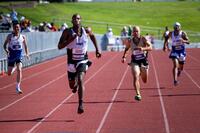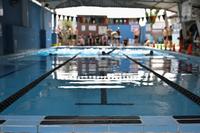Recently, some of my training partners were preparing to take fitness tests and for a pre-selection event with the Special Forces Reserve Unit, the 19th Special Forces Group in Salt Lake City.
They are prior active duty and now Army National Guard and reservists in California. This group has a single focus to pass the Special Forces Readiness Evaluation (SFRE) tryout so they may attend Special Forces Assessment and Selection (SFAS) at Fort Bragg, North Carolina.
The preparation is black and white. You have to ace the PFT, ruck and pass the SFRE standards and events.
Special Forces Readiness Evaluation (SFRE)
This is a three-day event that assesses your ability to continue forward into the Special Forces training pipeline. If you successfully complete SFRE, the next stop is as a SFAS candidate.
The SFRE is typically for members currently in the military. However, the major challenge is living at sea level while training for testing in Utah, where the altitude is above 6,000 feet in some training areas.
There are some issues with training at sea level and being ready for these challenging, high-standard tests and weekend-long events at altitude. Your body will work harder if you are not acclimatized to the lower oxygen levels at altitude. You will breathe harder, your heart will beat faster and you will perspire more.
The air is dry, so sweat will evaporate almost immediately and loss of water and electrolytes is a major concern. Sunburn, chapped lips, cramps and perhaps even altitude sickness can occur if you are not prepared for the changes that come with higher altitude.
You have three options with how to prepare.
1. Go early and acclimate
Your body must acclimate to the altitude and climate changes. This can take up to two weeks (or more), depending on the person. You may find that you cannot train as hard as you did at sea level, but you slowly will start to increase red blood cells, reduce the heart rate during activity and be more ready to compete as you adapt to the high altitude.
2. Double your cardiovascular output
Progress by starting a few months early to increase your distance or add significant time to your training through high-intensity intervals by using bikes, elliptical, stair steppers and swimming. This will help you increase your cardiovascular training output adding impact miles on your body. You do not want to injure yourself before SFRE.
3. A compromise
Another option is to take a few weekend trips into the mountains and get some runs, rucks and other workouts at a moderate level of altitude. If you live in California, go east into the mountains or hills and start working the lungs and legs at various altitudes.
The good news is that this area in Utah is not considered "high altitude." At 4,000 to 5,000 feet above sea level, this height is considered moderate. However, if you are not used to it, you may become nauseated, dizzy and up to 20-30 seconds slower per mile when running at your normal effort pace. It could be worse: The air thins almost twice as much at 7,000 to 8,000 feet above sea level.
In the sports world, some elite athletes will train high and compete low and see a big improvement in cardio performance after living at higher altitudes. However, if you push your cardio hard for a few months, you will find you will perform better at altitude when going from low to high.
My personal experience with this type of higher altitude preparation came when I played rugby at the Naval Academy, and it was our turn to go to the Air Force Academy and play at 6,700 feet above sea level. We basically doubled our cardio by adding in morning sprint and interval workouts, then added extra runs after afternoon practices. We also biked or swam in the evening five times a week for a few weeks. We doubled our cardio without too much additional running impact on the body.
It worked. I remember being thirstier than normal but not any more winded than normal. With a few deep inhales, most of my teammates caught their breath and was ready for the next play.
If you can do any combination of these three options for a month or more before your SFRE date, make sure you bring extra water, electrolytes, lip balm and sunscreen. You will be ready for your SFRE event and will soon be focused on doing it all again at Fort Bragg. Luckily, Fort Bragg is only about 400 feet above sea level.
Read this article on preparing for higher altitudes from medical professions who deal with altitude-related injuries and illnesses: Into Thin Air: Medical Article by Harvard Medicine.
Stew Smith is a former Navy SEAL and fitness author certified as a Strength and Conditioning Specialist (CSCS) with the National Strength and Conditioning Association. Visit his Fitness eBook store if you're looking to start a workout program to create a healthy lifestyle. Send your fitness questions to stew@stewsmith.com.
Want to Learn More About Military Life?
Whether you're thinking of joining the military, looking for fitness and basic training tips, or keeping up with military life and benefits, Military.com has you covered. Subscribe to Military.com to have military news, updates and resources delivered directly to your inbox.















